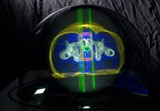Radiation Oncology
According to the American Cancer Society, the number of cancer patients is projected to increase 50%. This means that by the year 2030, there will be a total of 15 million people with cancer around the world. However, medical researchers and oncologists keep working nonstop to find new types of radiation oncology treatments, which might not bring this number down, but it might decrease the number of deaths caused by cancer. As you may know, there are numerous types of cancer, and there are also different types of treatments that can be used to counterattack the disease. Radiation is perhaps the latest type of oncology treatment as we know it.
Brief History of Radiation Oncology
The radiation oncology field has been around well over 100 years, and it all stemmed from the discovery of x-rays. A German physicist – Wilhelm Röntgen – discovered the existence of x-rays in 1895, and others scientists based their experiments on Röntgen’s discoveries. Among these scientists was American medical student Emil Grubbe, who was capable of implementing these x-rays into a treatment that would counterattack cancer. The first radiation oncology machine was engineered by Grubbe, and he used it to treat his very first patient, who was a woman suffering from breast cancer. Eventually, he graduated and established his own radiation oncology clinic in Chicago, and continued to share his discoveries and knowledge at local colleges and universities. Undoubtedly,Grubbe’s discoveries are the basis of the different radiation treatments we have today.
Types of Radiation Therapy
When the first radiation oncology machine was manufactured, it was quite simple and it couldn’t reach high levels of radiation. Doctors and radiologists were starting to discover that they would need higher power for penetration, but didn’t count with the technology to do so. It took many years for the radiation oncology field to develop, and even today, it continues to move forward. However, there are several different types of radiotherapies that are administered to the different cancer patients around the world. Currently, the approved forms of radiotherapies are the following:
- External beam radiotherapy
- Conventional therapy (beam)
- Stereotactic radiation
- Virtual simulation (3D multiple beams)
- Particle therapy (proton)
- Brachytherapy
- Radioisotope therapy (RIT)
Your doctor will be the one to discuss with you which radiotherapy is the best suited for your type of cancer and overall health condition.
Possible Side Effects
Perhaps you have noticed that even simple medication such as an aspirin bottle, comes with a warning sign that describes possible side effects. The radiation oncology field is the exact same way; there are numerous side effects that may develop after you receive radiation treatment for your cancer. Keep in mind, though, that there is no exact way of knowing if you will experience one, two or no side effects at all. There is a possibility that your side effects are severe, but there is also a possibility that they are not. Some of the most common side effects are:
- Fatigue
- Nausea
- Loss of appetite
- Intestinal discomfort
- Swelling

